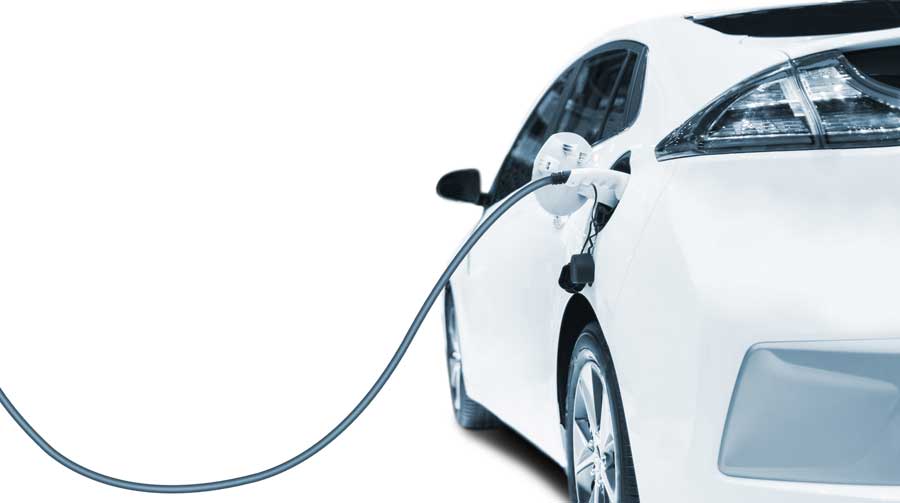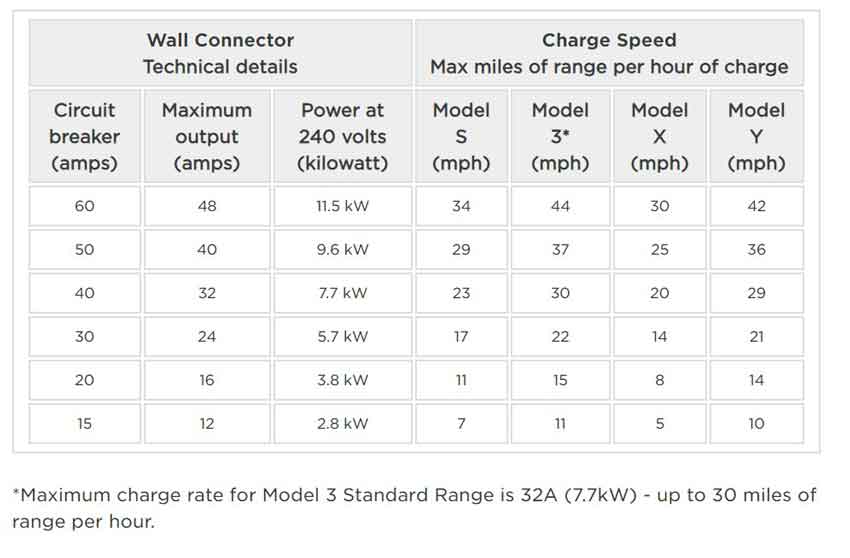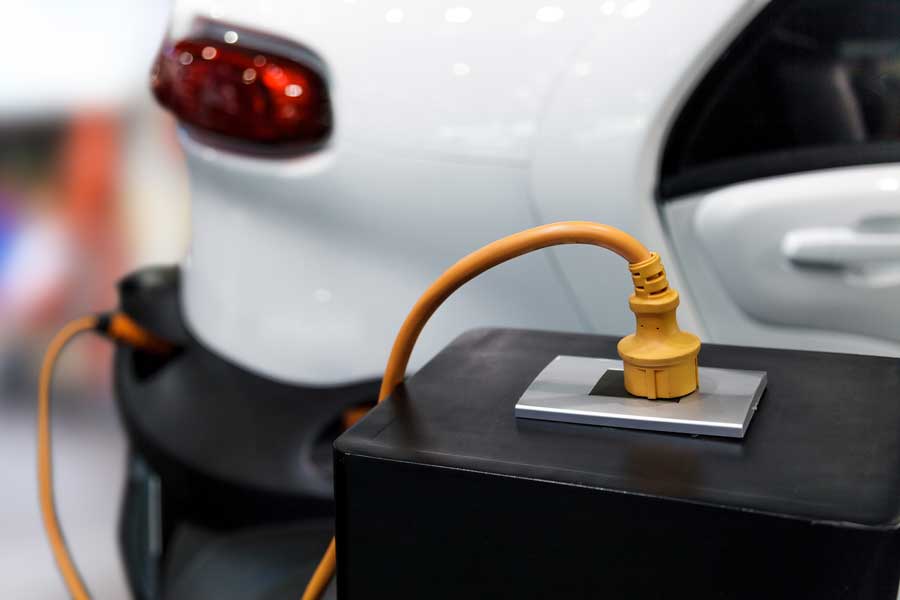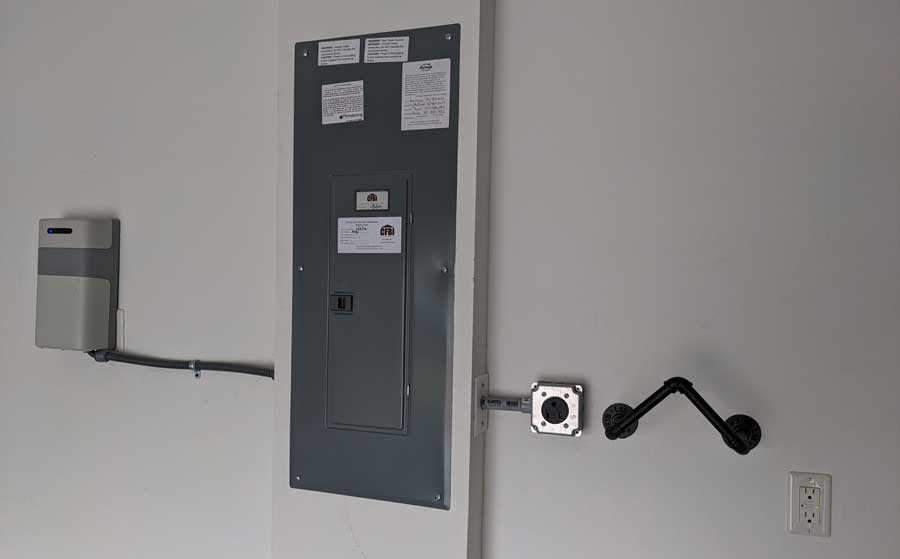No matter what you think about electric cars, car manufacturers have made it clear they’re here to stay. But since there’s no one standard charger for electric vehicles, it can be confusing for homeowners who want to charge their electric cars at home.
The kind of outlet needed for an electric car depends on your car’s model. For example, a Chevrolet Volt uses a 120v outlet, while the Tesla Model S battery needs a 240v outlet. While you can plug an electric car into a household outlet, a higher-voltage outlet will reduce the charging time.
Other factors may also affect the type of electric car outlet you need.
Read on to learn more about electric car charging, the time it takes to fully charge, and the different types of outlets.

How Long Does an Electric Car Take to Charge?
Several factors determine how long it takes to charge an electric vehicle. They factor in whether you’re talking about fast charging for a little additional range or putting it on the charger overnight.
These factors include:
The Type of Electric Car
Each company has different tech in their batteries, and each model tends to have different battery pack sizes.
That means the charging time can vary greatly, even among similar-sized cars.
For example, a Chevy Bolt adds a measly 4 miles of range per charging hour on a 120-volt plug. Similarly, a Tesla Model 3 can take between 7 and 29 hours, depending on how much power your home’s circuitry can handle.
EV Charging Amperage
Not only do the batteries in electric cars have limits to how much power they can accept, but the charging stations have different power delivery capacities.
For example, a Tesla Model 3 will charge much slower when you plug it into a circuit with a 15 amp breaker than if you would plug it into a plug with a 60 amp breaker.
To make things more complicated, it has a maximum charge rate of 7.7Kw, so even if you plug it into a 60 amp circuit, it can’t take advantage of that extra power.
In simple terms:
- If your charging station can provide more power than your car can support, then your car will be the bottleneck.
- If your car can accept more power than your charging station can provide, then the charging station is the bottleneck.
Most manufacturers, like Tesla, will list a theoretical charging time.

However, to figure out your EV’s charging time, divide your car’s battery pack by the electric vehicle charging station’s output rate or a number lower than the vehicle’s acceptance rate.
That gives you the number of hours required to charge an empty battery.
Usually, this information is displayed when you plug your car into a charging station.
120V Outlets for Electric Car Chargers
The 120v outlet is the standard outlet in any US and Canadian home. It’s the same plug you use for your cell phone chargers, TVs, and microwaves.
More importantly, you can also plug in your electric car. This is sometimes called Level 1 charging in your carport or garage.
Electric car charger outlets should be on their own dedicated circuit.
You may draw extra amperage and trip a breaker if your charging outlet is connected to the same circuit as your laundry room or kitchen. Call an electrician to add a dedicated circuit rather than trying to DIY it.
Charging your electric car is as easy as charging your smartphone. Just plug in to your existing NEM5-15 receptacle or install a 5-15R/5-20R socket, plug in and you’re done!
Level 1 charging power output can be between 12 and 16amps of continuous power. That means the charger can deliver between 3.5 and 6.5 miles of range per hour of charging.
That’s enough to get you around 40 miles of daily driving.

240V Outlets for Electric Car Chargers
The 240v charging system is called Level 2 charging and is much faster than charging through a 120v outlet. Some chargers allow you to plug in both 120v and 240v outlets (source).
Level 2 charging adds close to 60 miles of range to a car per hour of charging time, making it ideal for electric vehicles. They typically produce between 16 and 40 amps of power output. That translates into 14 to 35 miles of electric range per hour of charging.
It’s worth noting that fully electric cars require level 2 or 240v charging to get a full battery overnight.
Cost To Install a 240 Volt Electric Car Outlet
Installing a level 2 charging system in a home with adequate electrical service is inexpensive. However, if your home requires a substantial electrical service upgrade, you may have to pay more.
My neighbor added a dedicated 240-volt outlet for his Tesla Model X to ensure he wouldn’t overload his circuits while charging his EV.

The cost of installation ranges between $500-$1,000, depending on the electrician or the company you choose to work with. In some cases, you may be eligible for a 30% tax credit.
Level 2 EV chargers require 240 volts from your breaker panel to the charging station. Usually, this means installing a double-pole circuit breaker to two 120v outlets to double the circuit voltage.
Occasionally, you may need to replace the breaker box to have a compatible interface.
Given the technical nature of this job, It’s vital to work with an experienced and licensed electrical contractor who understands the local, state, and national regulations and codes. Be sure to check with your local building permit department and ensure your contractor pulls any permits you need.
Level 3 Charging
For an extra boost, you can install a Level 3 charging device. These high-output chargers add 90 miles of range to your electric vehicle in 30 minutes.
However, these chargers are expensive and may damage your car’s battery due to their high voltage levels if used regularly.
The other challenge is that you can’t install them in your home. As of now, almost all of the level 3 charging is found in public charging stations.
Level 3 is also known as DC fast charging as it converts the AC current into DC current for storage in EV batteries.
An excellent example of how quickly this charging works is Tesla, which can reach 80% in 30 minutes.
Wrapping It Up
Most electric car owners should opt for a 240-volt, level 2 charging outlet for their garage. However, if you only use your electric car for short distances, you could utilize the typical 120-volt garage outlets.
Before re-wiring your garage, you need to figure out the distance you plan to drive in one day, the number of times the car will be used on a single day, and the time you’ll have to charge the vehicle.
A 120v electric car outlet is slower than a 240v outlet, but it can still charge your car overnight, typically with a lower range. However, the 240v outlet is more powerful and produces extra power output to charge your EV quickly.


